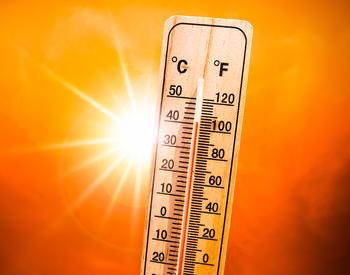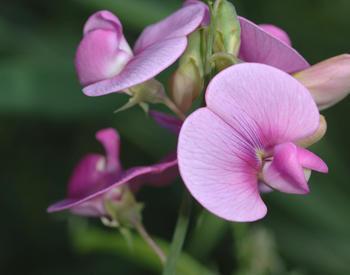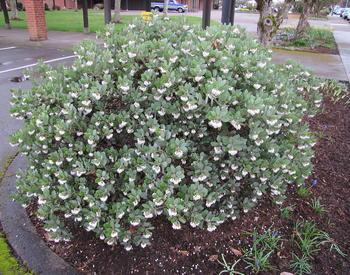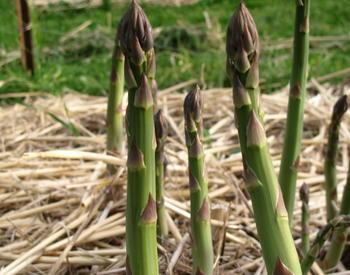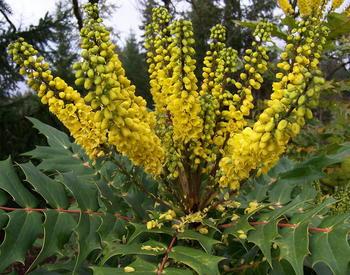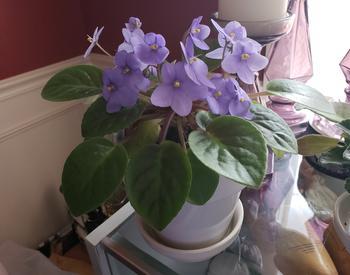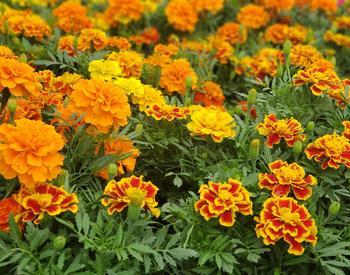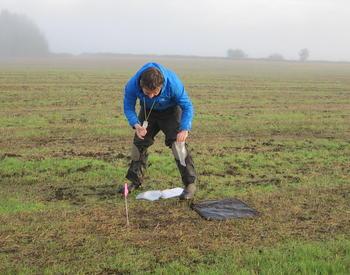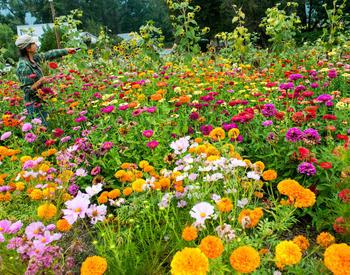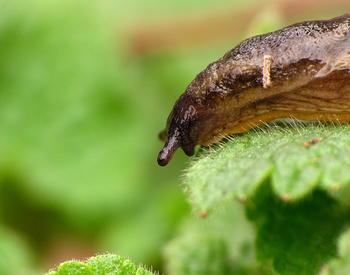In June 2021, much of the Pacific Northwest experienced a record-breaking heat wave, and many gardeners were alarmed at the sight of their formerly green and fleshy hydrangea leaves turning brown and crispy.
Blooms were equally affected, developing brittle, tan edges rather than the lush blue typically displayed in June. Heat and drought are becoming more common in our area, therefore plants that previously thrived can become stressed and damaged. However, there are some tips and tricks to get your plants to pull through and prevent damage in the next heat wave.
Why are hydrangeas susceptible to heat stress?
Hydrangeas are plants that love water, which made the heat particularly tough for them. When hot temperatures occur, plants need to cool themselves, just as we seek a cool place during the heat of the day. Unfortunately for plants, they can’t get up and move!
Plants cool themselves by drawing water from the roots, which then moves through the stems and out through the leaves. This occurs at a fast rate during the hot, windy conditions seen in heat waves.
If not enough water is available in the soil, or it is lost to the atmosphere faster than it can be replaced, then the plant tissue where the water can’t reach will die. This is why we see so many brown, crispy leaf edges. It is also possible for high heat itself to cause tissue death. This is most likely in places surrounded by heat-absorbing materials such as asphalt, black landscape fabric, etc.
How can I help hydrangeas recover from extreme heat damage?
If you did see damage to your hydrangeas, the burnt leaves themselves will not recover, but this does not mean that your plant will not survive.
Water
Watering deeply will help your plant pull through. To do this, you can use a soaker hose or watering bag that applies a slow drip around the base of the plant. Most of our soils in western Oregon have a high clay content, which means the soil can hold a good amount of water. However, once it dries out in the summer it can be difficult to re-wet. It takes a while for the water to penetrate the soil beyond the surface.
A soaker hose will help to get the water deeper in the soil profile so that the whole root zone is irrigated. A quick hand watering with a garden hose, when applied to dry soil, will not soak in deep enough and will only wet the surface. Use a screwdriver to probe into the soil to see how far down the moisture is.
What to avoid
After a good watering, your hydrangeas will likely get some regrowth, although for severely damaged plants it may be next summer before they regain their former glory.
Avoid pruning; the resulting lush new growth will be sensitive to further damage from heat waves later in the summer.
Also avoid fertilizing as excess fertilizer can attract pests to the plant.
Removing a few crispy leaves or burnt mopheads is fine to improve your plant’s appearance. However, resist the urge to prune severely and remove a large amount of the plant’s foliage since that will cause further stress and a flush of tender new growth.
Watch for pests
Another potential issue caused by a heat wave is lingering plant stress. The stress hydrangeas experienced can attract pests such as spider mites. Spider mites often become problematic in the dry heat of summer.
Watch for these tiny pests that can cause bronzed or yellowed leaves and webbing. They can be sprayed off with a stream of steady water.
Deep watering and keeping your hydrangeas well-hydrated can reduce stress and help ward off these critters.
Choose hydrangeas that tolerate higher temperatures
There are dozens of species of hydrangeas, however, just a handful of these are commonly grown in the U.S. With all this diversity, some hydrangeas are more tolerant of heat, dry soils and sun than others.
Some hydrangeas are native to the southeastern U.S. and others are native to Asia. The coveted bigleaf hydrangeas (Hydrangea macrophylla) with their large blue to pink blooms are spectacular in the garden, but they are less tolerant of drought and heat. Bigleaf hydrangeas are native to coastal Japan, and therefore do best in a coastal environment, which definitely was not what we had during our heat spell!
The hydrangea species that are native to the southeast U.S., such as the oak leaf hydrangeas (Hydrangea quercifolia) and smooth hydrangeas (Hydrangea arborescens), still typically prefer moist soils but can tolerate summer heat better.
The most adaptable hydrangea is the panicle hydrangea (Hydrangea paniculata). It can be grown in full sun and tolerates drier conditions.
In addition, some cultivars of smooth and oakleaf hydrangeas can also tolerate sun and fared better during our recent heat wave.
While none of these should be considered “drought-tolerant plants,” they may be better suited for our climate and also have breathtaking blooms. Do your research and read plant tags when purchasing hydrangeas. There can be a lot of variability among cultivars.
Prevention for future heat waves
Plant damage due to heat can be lessened or prevented. Consider having a plan in advance.
- Right plant, right place. Choose plants well suited for the amount of sunlight and moisture received. Often the most severely damaged plants in heat waves are those planted in areas that receive more sunlight than they are adapted to. Drought-tolerant plants are also recommended because they are less susceptible to damage and reduce water use in the landscape.
- Water plants deeply prior to the heat event so that the root zone is well hydrated.
- Place mulch, such as bark, around plants to help keep in moisture. Avoid applying gravel or black-plastic mulches, which raise soil temperatures.
- Prior to planting, amend soil with organic matter. This will help the soil hold moisture.
- Avoid applying fertilizer prior to a heat event.
- Use a temporary shade structure. Purchased shade cloth, bed sheets or fabric can be placed over structures to keep the sun off plant foliage.
Resources:
- Leaf Scorch of Ornamental Trees and Shrubs from University of Missouri Extension University
- Managing Heat Stress in Nursery and Landscape Plants from Rutgers Cooperative Extension
- Church, G. (2001) Hydrangeas. Firefly Books.
